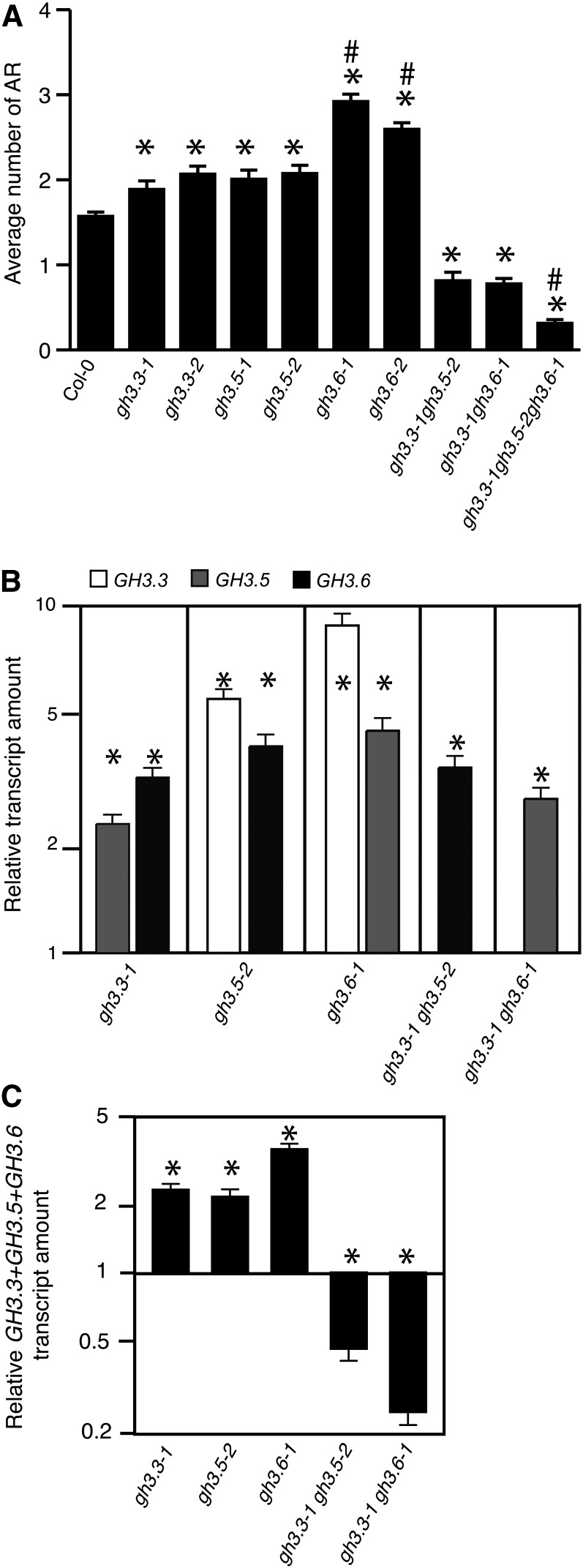Figure 2.
GH3.3, GH3.5, and GH3.6 Genes Have Redundant Functions in the Regulation of Adventitious Rooting.
(A) Average number of adventitious roots (AR) in two independent knockout alleles for gh3.3, gh3.5, and gh3.6 single mutants, in the double mutants gh3.3-1gh3.5-2 and gh3.3-1gh3.6-1, and the triple mutant gh3.3-1gh3.5-2gh3.6-1. Seedlings were first etiolated in the dark, until their hypocotyls were 6 mm long, and then transferred to the light for 7 d. Data from three independent biological replicates, each of at least 30 seedlings, were pooled and averaged. Error bars indicate se. A one-way analysis of variance combined with the Tukey’s multiple comparison posttest indicated that the differences observed in the mutants versus the wild type (*), in gh3.6 versus gh3.3 or gh3.5 (#), and in the triple mutant versus the double mutants (#) are significant (P < 0.01; n > 90). Col-0, ecotype Columbia.
(B) The steady state expression levels of GH3.3, GH3.5, and GH3.6 were quantified by quantitative RT-PCR in the hypocotyls of the different gh3 single and double mutants first etiolated in the dark, until their hypocotyls were 6 mm long, and then transferred to the light for 72 h.
(C) The relative amount of the total GH3.3+GH3.5+GH3.6 mRNAs in the hypocotyl of single and double gh3 mutants grown as in (B) was quantified by quantitative RT-PCR.
For (B) and (C) Gene expression values are relative to the expression in the wild type, for which the value is set to 1. Error bars indicate se obtained from three independent biological replicates. A one-way analysis of variance combined with the Dunnett’s comparison posttest confirmed that the differences between the wild type and the mutants (*) are significant (P < 0.001, n = 3).

